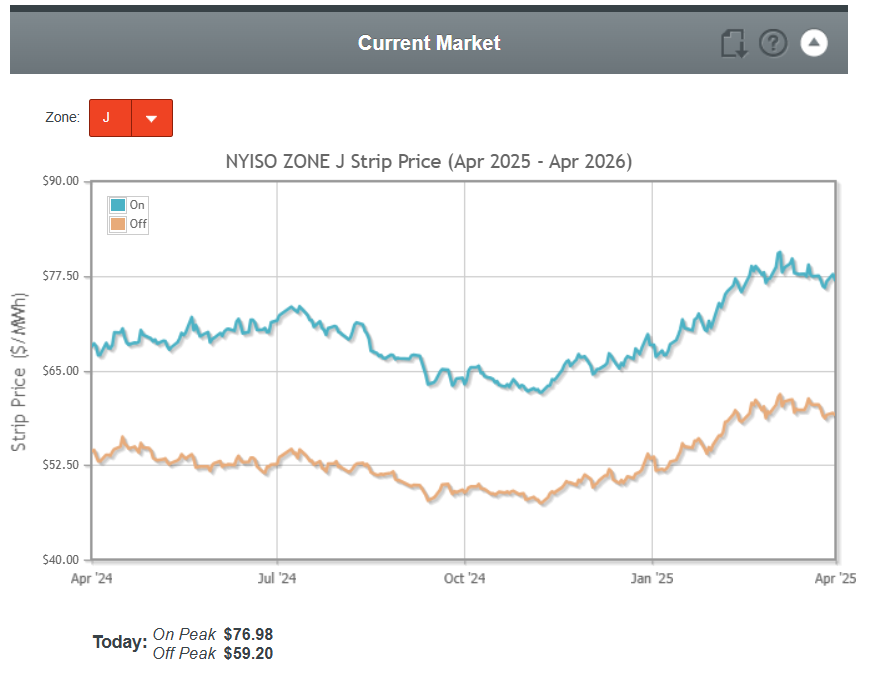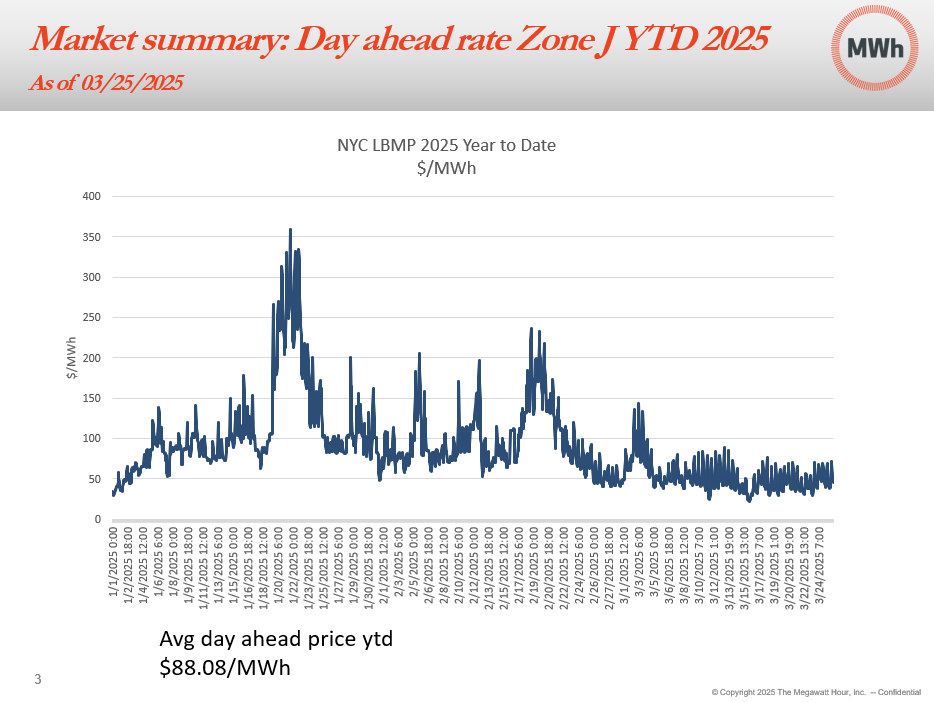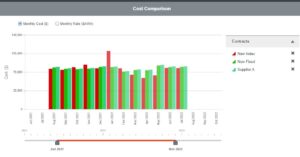Volatility is a term we often hear in financial and energy markets, but what does it really mean? In simple terms, volatility refers to the degree of variation in prices over time. Higher volatility means larger swings in prices, leading to greater uncertainty for businesses and consumers alike.
To better understand volatility, we analyzed the year-over-year changes in the day-ahead (DA) index price of power in New York City (Zone J) from January 1 to March 4, comparing 2025 to the same period in 2024. The results were striking.
Volatility and Average Prices: Key Findings from Our Analysis
Average Energy Prices Have Soared
The average index price ( day-ahead locational-based marginal price, known as “LBMP”) in New York City more than doubled in 2025 compared to 2024:
- 2025 Average Price: $118.32/MWh
- 2024 Average Price: $50.96/MWh
- Year-over-Year Change: +132.18%
This dramatic price increase signals a significant rise in energy costs, impacting businesses and households across NYC.
Make an energy plan now
Don’t get caught without a plan.
Understand energy markets and how they impact your business.
Make markets work for you.
Get access

Volatility is on the Rise
Not only have prices increased, but they’ve also become more unpredictable. We measured volatility using the standard deviation of LBMP prices. We found that volatility has risen sharply:
- 2025 Volatility: 60.92
- 2024 Volatility: 43.51
- Year-over-Year Change: +40.01%
This indicates that energy prices are fluctuating more than before, making it harder for businesses and consumers to plan their energy expenses.
What’s Driving Higher Index Prices and Greater Volatility?

Several key factors contribute to rising energy prices and increased volatility:
- Weather-Driven Demand: Unpredictable weather patterns, including extreme cold spells or heat waves, can drive up energy demand.
- Energy Storage Challenges: Reductions in natural gas storage due to the colder-than-expected winter. Since natural gas serves both as a heating fuel and a marginal fuel for power generation, cold weather can have a significant impact on gas and power prices.
- Uncertainty: Supply chain disruptions, geopolitical tensions, the threat of tariffs on imported electricity and shifts in energy production can impact energy costs.
The Bottom Line for Financial and Energy Decision Makers
The energy market in NYC is experiencing a period of significant price increases and heightened volatility. For businesses and consumers, this means adapting to a more uncertain pricing landscape. Operating a business or organization through uncertain markets can create a sort of decision paralysis. Our advice is that you make energy market volatility work for you.
Assuming your business is operating well and is stable, you will always be able to make energy purchases well into the future. You don’t need to be passive and accept pricing delivered just months or weeks before your contract expires. Purchasing energy in advance before your current contract ends will allow you to take advantage of volatility rather than being subject to it. How do you know whether to buy? Well, if you’ve determined your risk appetite and budget targets, then you will want to look for products and pricing that meet those goals.
Whether through energy efficiency strategies, demand response programs, or hedging techniques, finding ways to navigate this volatility will be crucial in 2025 and beyond.

the megawatt hour
Hedging
How to clarify your objectives and employ hedging effectively
- Understand hedging misconceptions
- Clarify the right strategy for your business
- Communicate your objectives clearly
Free Download
Understand the risks, myths and rewards of hedging energy and fuels.
GET INSIDER INFORMATION ABOUT ENERGY
Are you interested in understanding energy from an insider’s perspective?
Then, sign up for our newsletter. You’ll love it!
We don’t spam and we don’t share your email.

